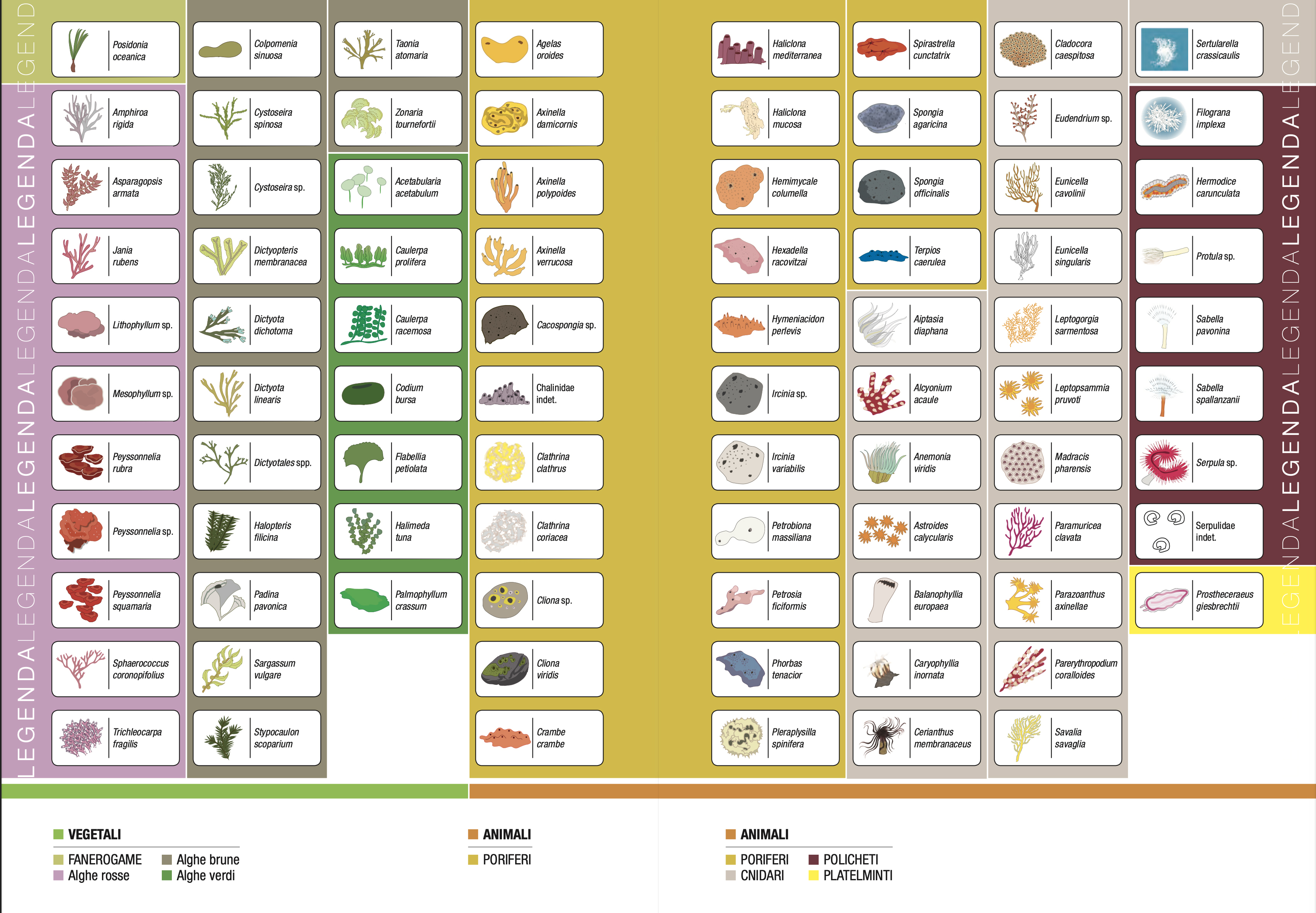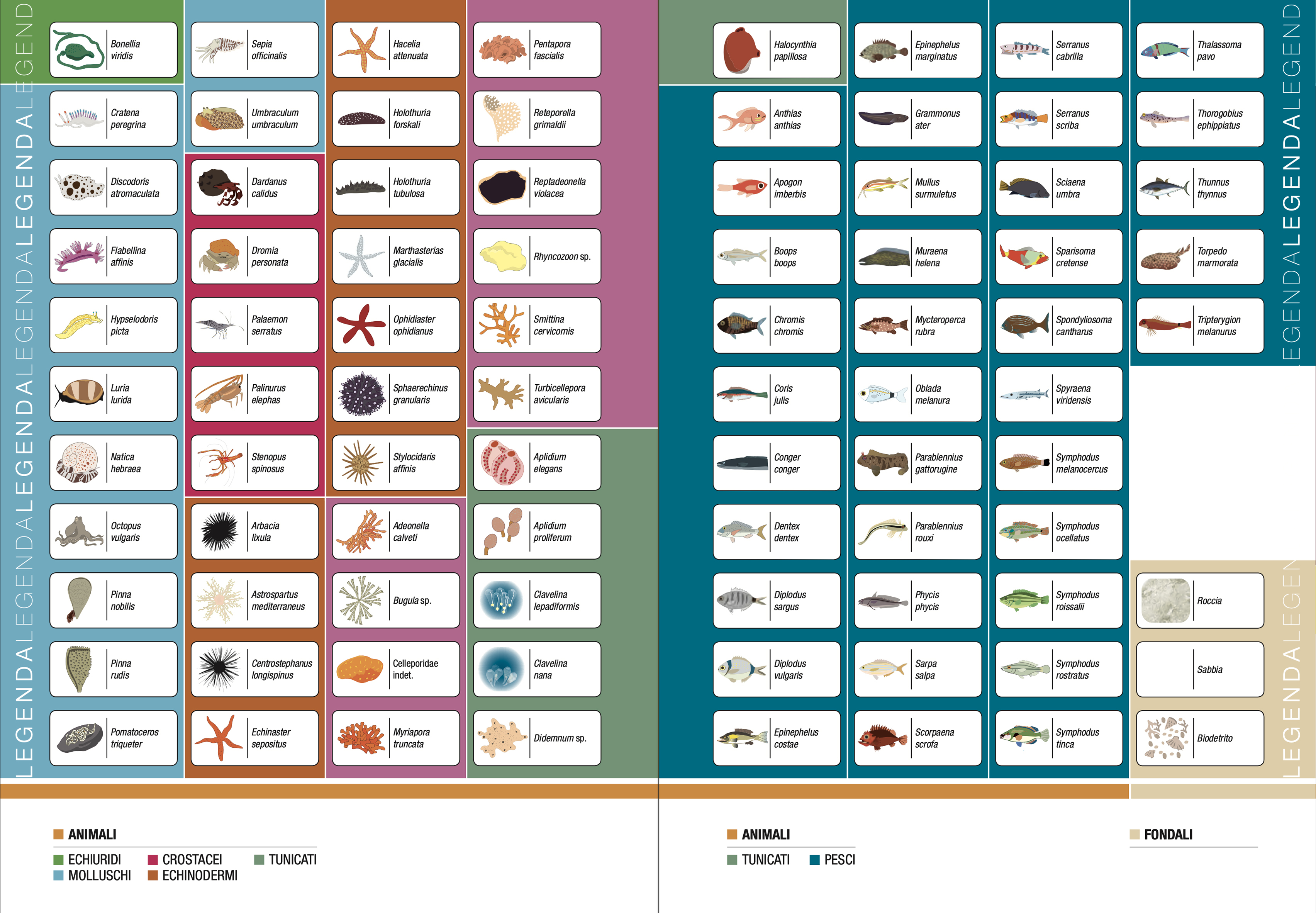Site 7 - Punta Bassana
The variety of benthic species and underwater landscapes make this wall particularly interesting and appreciable. The descent begins close to the north side of Punta Bassana along a carbonate rock face rich in algal populations, which at around 6 m depth alternate with posidonia and meadows of Caulerpa racemosa, among which hedgehogs (Sphaerechinus granularis, Arbacia lixula) graze. A rocky pinnacle carpeted by colonies of the madreporaria Astroides calycularis delimits a passage, at about 12 m, beyond which one descends along the north wall, which is vertical and rich in red gorgonians (Paramuricea clavata) of increasing size as one goes deeper. Numerous benthic species enrich the layer below the gorgonians, such as the ascidian Halocynthia papillosa, stars (Ophidiaster ophidianus, Hacelia attenuata), sponges (Hexadella racovitzai, Chondrosia reniformis, Phorbas tenacior) and colonies of the bryozoans Smittina cervicornis, Turbicellepora avicularis, Pentapora fascialis. The latter two species may also be present on gorgonian branches. Below 25 m, numerous other species add colour to the substrate. Going around the Point, a biodetritic sandy channel bordered offshore by a large rock formation is followed at about 35 m. Colonies of P. clavata and Alcyonium acaule colour the boulders. Common are kings of mullet (Apogon imberbis), as well as the sighting of a few beautiful specimens of dentex (Dentex dentex). Going up the wall, one encounters abundant gorgonia Eunicella cavolinii and Eunicella singularis. Some branches of the gorgonia may be colonised by the parasitic cnidarian Parerythropodium coralloides. Going up to about 15 m, under the vault of a long ravine that rises to about 6 m, one finds abundant A. calycularis as well as the sponges H. racovitzai, Agelas oroides and Clathrina coriacea. Some fish species are also common, including the grouper Epinephelus marginatus, the seabream Diplodus sargus, A. imberbis and Chromis chromis. A few metres from the surface, then, one can observe, in the algal carpet, cushions of the madreporaria Cladocora caespitosa and the presence of the vermocane (Hermodice carunculata).
Legend:


RES Edizioni, Sarzana (SP)